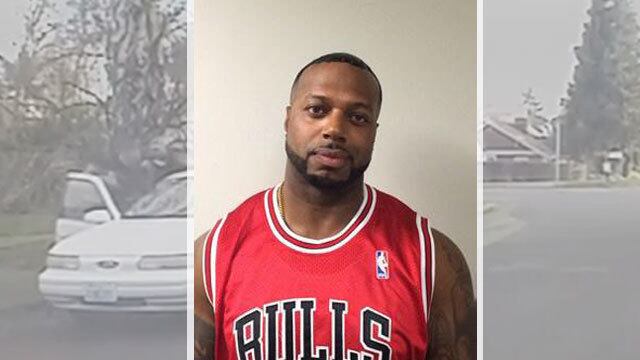After reviewing evidence in the shooting death of Che Taylor, a suspect killed by police in 2016, King County Prosecutor Dan Satterberg said charges would not be filed against the officers.
In February 2017, nearly a year after Taylor's shooting, the majority of inquest jurors said that when Seattle police fired they believed Taylor posed a “threat of death or serious bodily injury.”
In order to prosecute the officers for homicide relating to Taylor’s death, the state would have to disprove that the homicide was legally justified as well as the police officer good faith exception, Satterberg said.
State law says a police officer "shall not be held criminally liable for using deadly force without malice and with a good faith belief that such (an) act is justifiable."
“In light of the investigative materials, the video evidence, the testimony of witnesses at the inquest and the jurors’ answers to the court’s interrogatories, there is insufficient evidence to overcome this complete defense as defined by the statute,” he said.
QUICK FACTS
● Taylor was shot Feb. 21, 2016, in the Wedgwood neighborhood of Seattle.
● Inquest jurors unanimously said that Taylor followed commands.
● Download a PDF of the inquest results here.
● The majority of jurors believed the officers thought Taylor posed a “threat of death or serious bodily injury” when they fired.
● Inquests are fact-finding hearings answering a series of questions about the case. It is not a criminal proceeding.
● Police were conducting an undercover drug operation. Taylor was found with suspected drugs.
● Taylor, who had convictions for rape and robbery, was prohibited from carrying a handgun.
● NAACP leaders said the case was murder and called for resignation of Seattle Police Chief Kathleen O’Toole.
"It proves what we've known all along: that our criminal justice system is set-up to protect police officers, even when it comes at the expense of protecting the community," the Seattle King County NAACP said in a statement sent by Rachael DeCruz. The NAACP called for a change in the state law that references malice and good faith.
The inquest jurors unanimously agreed that Officer Michael Spaulding thought Taylor was drawing a handgun from a holster on his right hip. Six jurors said the other officer, Scott Miller, thought Taylor was drawing a handgun; two said it was unknown.
Taylor was shot Feb. 21, 2016, in the Wedgwood neighborhood of Seattle. Officers who were conducting an undercover drug operation said Taylor was reaching for a gun and not complying with commands when they shot him.
The inquest jurors unanimously agreed that Taylor showed his hands when commanded to do so and moved his body position down after officers commanded him to the ground.
Inquests are fact-finding hearings. The jurors do not find guilt or innocence or determine if the shooting was justified; they answer a series of questions about the shooting after hearing testimony. Inquests are standard in King County for officer-involved shootings.
Question No. 40 of 55 given to the jurors asked if Spaulding thought Taylor posed a threat of death or serious bodily injury when he shot. Seven jurors said yes. One said it was unknown.
For the same question of Miller, six jurors said yes, one said no and one said it was unknown.
All jurors agreed that Miller and Spaulding were wearing jackets or overlays that identified themselves as Seattle police. Only two said Miller verbally identified himself as police when approaching Taylor; six said it was unknown. Five jurors said Spaulding did not and three said it was unknown.
Six jurors said while Spaulding was approaching he saw Taylor move his right hand to his right hip area. Two said it was unknown. For Miller, no jurors said he saw Taylor move his hand to his hip area.
All jurors said the handgun was not found in Taylor's hand or holster, but a gun was found under the front passenger seat. They also all said when Seattle Firefighter Timothy Hammill cut off Taylor’s belt he saw a firearm holster attached to Taylor’s right hip.
Taylor’s brother, Andre, and attorney James Bible noted that Taylor was compliant and that a majority of the jurors believed the officer did not verbally identify themselves. They believed the officers’ fear might have been internalized when they were watching Taylor before the confrontation.
Andre Taylor and James Bible said in February they hope the officer will be charged for Che Taylor’s death.
Witness said Taylor reached for gun
An officer testified that Taylor, a felon who was prohibited from possessing firearms, had a gun on his right hip. A civilian witness who was near Taylor also said he reached for a handgun, according to a police report.
There is police dash cam video of the Taylor incident, but it doesn’t clearly show what happened. The video, which is at the bottom of this article, shows Taylor crouching toward the passenger side floorboard and the officers simultaneously shooting.
The car’s driver and a passenger -- the person who said Taylor was reaching for a gun -- were not injured.
Related >> What to know about the Che Taylor shooting video
Taylor’s family said he did not receive aid for at least seven minutes. In officer-involved shooting cases, police are trained to handcuff the suspect after the shooting and call for aid, which they did.
The gun Taylor had was sold multiple times before the incident. The original owner is a King County Sheriff's deputy who owned the gun three years ago before selling it to another man, according to The Seattle Times. The Times also reported the gun was later sold to a soldier near Joint Base Lewis-McChord. The ATF was trying to determine how Taylor got the gun.
Taylor’s family previously asked the FBI to investigate. The inquest jury did not hear the history of the gun.
Protests from NAACP
Taylor’s actual name is Marvin Hunter, but he also went by the name Che Taylor. His family, who calls him Che T, believes he was complying with officers when he was shot.
Taylor spent 22 years in prison for rape, robbery, illegal possession of a firearm, assault and drug possession and delivery. The gun restriction was part of his felony sentences.
Staff at Harborview Medical Center, where Taylor was pronounced dead, located a black bag around his neck that contained three golf-ball sized baggies of suspected heroin and three golf-ball sized baggies of suspected crack cocaine. When officers were taking the car’s driver into custody a plastic baggie containing suspected heroin was found in his possession, police said.
NAACP chapter president Gerald Hankerson previously said the case was “cold-blooded murder.” NAACP attorney and former president James Bible previously told KIRO 7 that the witness who said Taylor was reaching for a gun may have said what police wanted to hear. Bible said there also have been multiple accounts of what happened during the fatal shooting.
“First, he’s got a gun on him; second, he has a gun within reach; next, he was reaching into the car – oh no, he wasn’t reaching in to the car, the gun was on him,” Bible said in 2016. “The message is ever-shifting, but ultimately we can’t trust the police department.”
However, written police statements show little variance.
The day of the shooting police said that officers “contacted the man who refused commands. Two officers fired at the suspect during the confrontation.”
The following day, police released the following text as part of a larger statement:
“Officers ordered Taylor to show his hands and get on the ground. He did not follow officers’ commands, and instead leaned into the Taurus. According to officers, as well as a civilian witness interviewed by investigators, Taylor reached for his handgun, leading officers to fire. Officers detained the other two people in the car and called for medics.”
Related >> NAACP responds to shooting death of Che Taylor
Cox Media Group









